This Top 10 Istanbul Museums offers a curated list of Istanbul’s most notable museums, with a concise overview of each institution’s unique offerings. Istanbul boasts a diverse and high-quality range of museums that reflect its rich history, artistic heritage, and cultural dynamism. From grand historical sites like Topkapi Palace and the Istanbul Archaeological Museums, which house relics spanning millennia, speciality museums like the Rahmi M. Koç Museum highlight industrial and technological advancements, and the Istanbul Toy Museum and the Panorama 1453 History Museum provide immersive and nostalgic experiences. Whether exploring Byzantine mosaics, Ottoman treasures, or modern masterpieces, Istanbul’s museums offer a world-class experience that blends past and present in a uniquely captivating way.
Below is our list: “Best of Istanbul Top 10 Museums”, excluding museums that are primarily art galleries:
Top 10 Istanbul Museums – Table of Contents
Best of Istanbul – Top 10 Istanbul Museums
Istanbul Archaeological Museum
Location: İstanbul Arkeoloji Müzeleri, Cankurtaran, 34122 Fatih/İstanbul, Türkiye. The official Turkish Museums website. Opening Hours: Daily: 09:00 – 20:00 (winter ticket office closes at 18:30). Entrance Fee: The full-price adult entrance fee in February 2025 was €15.00.
The Istanbul Archaeological Museums are a group of three museums near Topkapı Palace: the Archaeology Museum, the Museum of the Ancient Orient, and the Tiled Kiosk Museum (as of February 2024, it was closed for renovation). The museums house a vast collection of artefacts from various cultures collected from imperial lands.
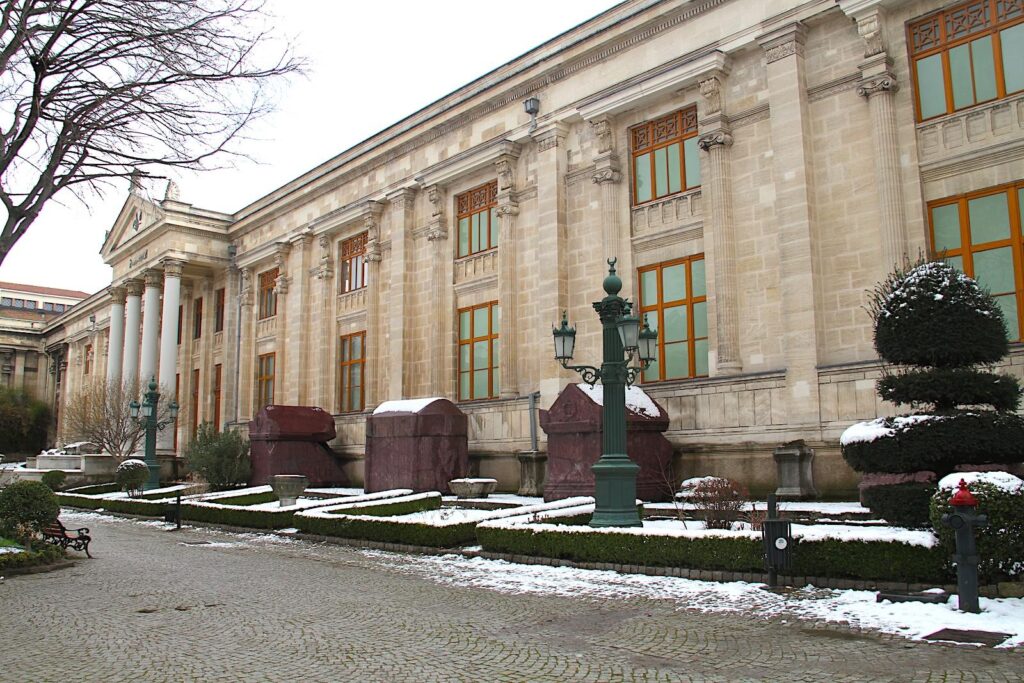
The museum’s foundation dates back to 1869 as the Imperial Museum. The basis of the Archaeology Museum is the Museum-I Humayun, which consists of archaeological artefacts collected in Hagia Irene. The Tiled Kiosk, built in 1472 A.D. during the reign of Mehmed the Conqueror, was converted into a museum due to the inadequacy of Hagia Irene. Osman Hamdi Bey’s appointment as museum director in 1881 marked a new era. The building used as the Museum of the Ancient Orient was built by Osman Hamdi Bey in 1883. The Archaeological Museum building is a grand example of neo-classical architecture.
The museums exhibit a wide range of artefacts. Highlights include sarcophagi from the Royal Necropolis of Sidon, including the Alexander Sarcophagus and the Sarcophagus of the Mourning Women, glazed tile images from the Ishtar Gate of Babylon, statues from ancient antiquity, and a tablet with the oldest known law collection, the laws of King Ur-Nammu.
Museum of Turkish and Islamic Arts
Location: Türk ve İslam Eserleri Müzesi, Binbirdirek, At Meydanı Cd No:12, 34122 Fatih/İstanbul, Türkiye. The official Turkish Museums website. Opening Hours: Daily: 09:00 – 20:00 (winter ticket office closes at 18:30). Entrance Fee: The full-price adult entrance fee in February 2025 was €17.00.
The Museum of Turkish and Islamic Arts, located in the historic Ibrahim Pasha Palace in Istanbul, is a treasure trove of Islamic art spanning centuries. It was established in 1914 during the late Ottoman period, initially under the name “Evkaf-ı İslamiye Müzesi” (Museum of Islamic Foundations). The museum aimed to collect and preserve valuable artefacts from various regions of the Islamic world. Over time, it has evolved into a significant institution showcasing the breadth and depth of Islamic artistic heritage. The museum is under the management of the Turkish Ministry of Culture and Tourism.
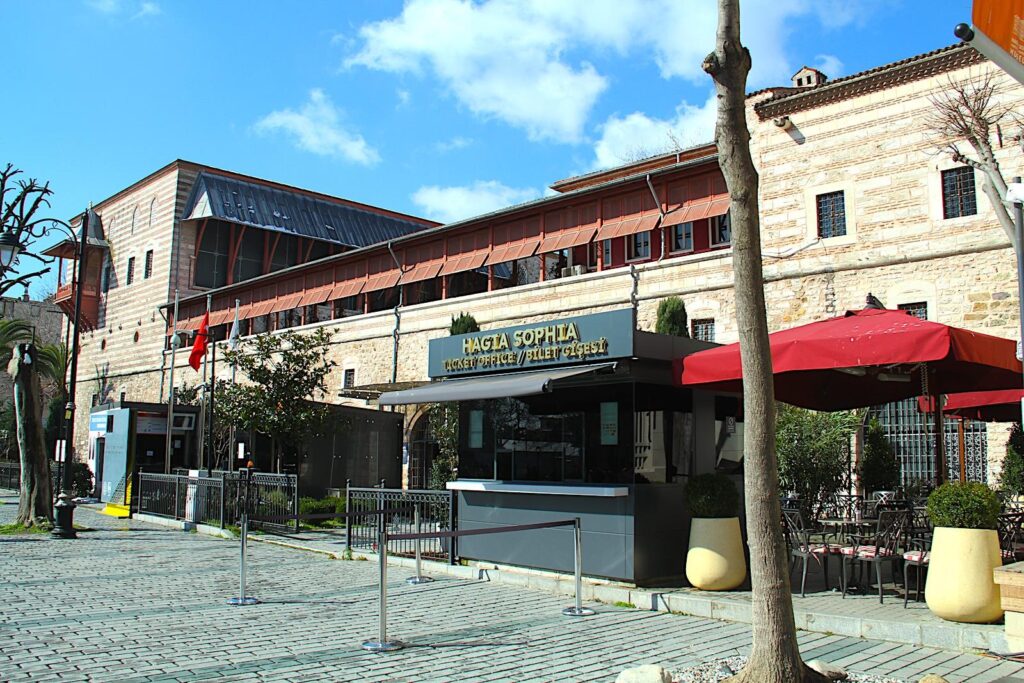
The museum’s collection is incredibly diverse, encompassing various artistic expressions from the 8th to the 19th centuries. Visitors can admire exquisite examples of calligraphy, ceramics, metalwork, textiles, and, most notably, carpets. The carpet collection is considered one of the finest in the world, featuring rare and historically significant pieces from various regions of Anatolia and beyond. The museum also houses a remarkable collection of Qur’ans, showcasing the evolution of Islamic calligraphy and illumination. Additionally, visitors can explore displays of wooden artefacts, glass objects, and stone carvings, providing a comprehensive overview of Islamic artistic traditions.

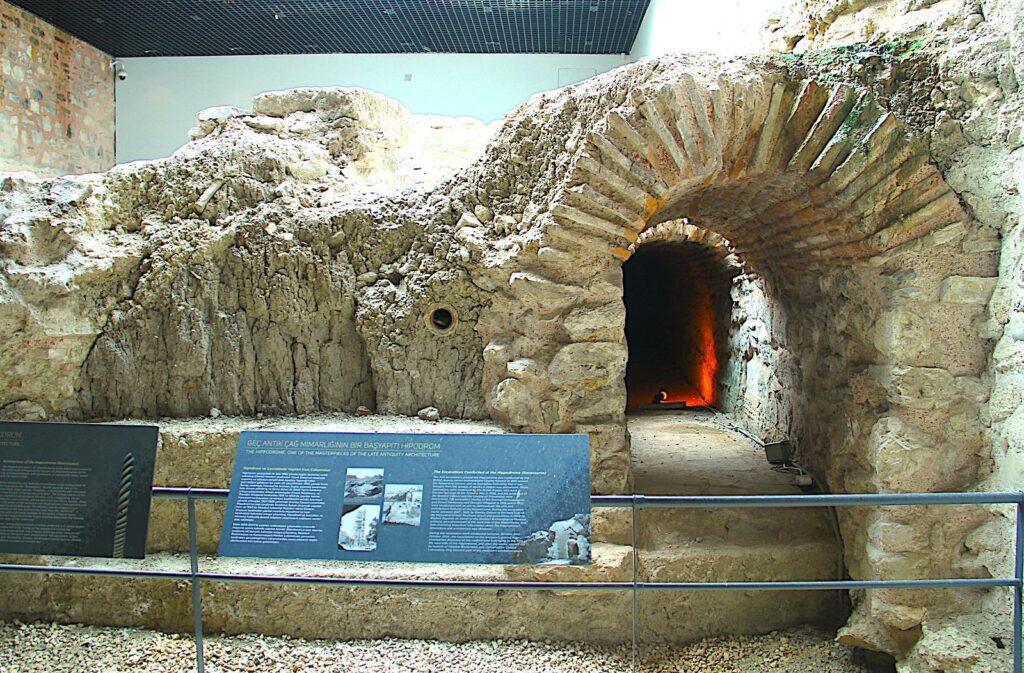
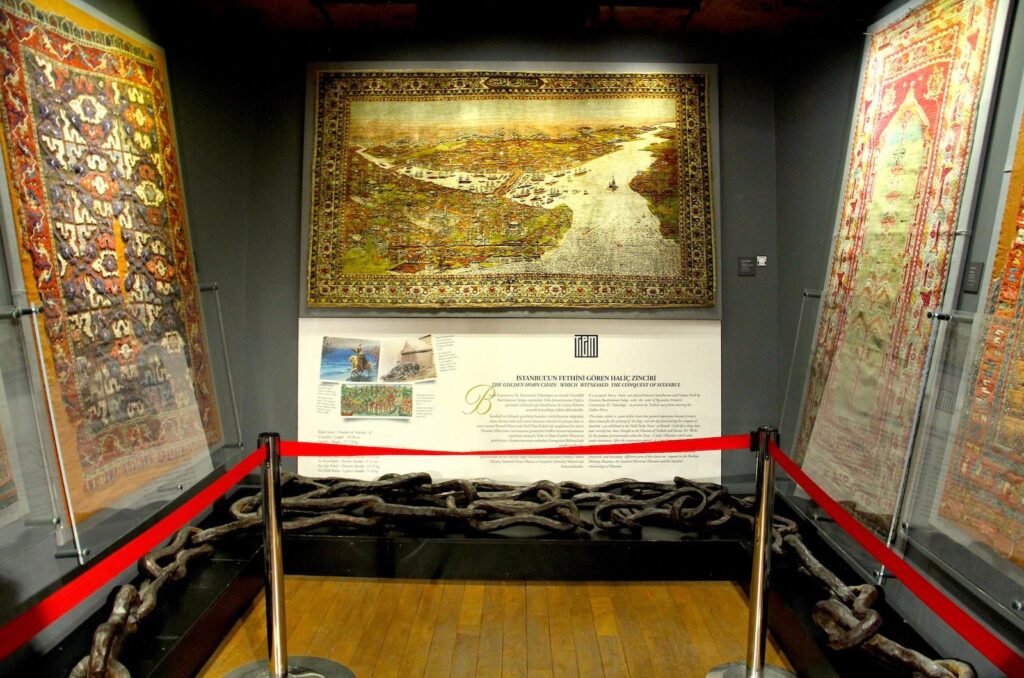
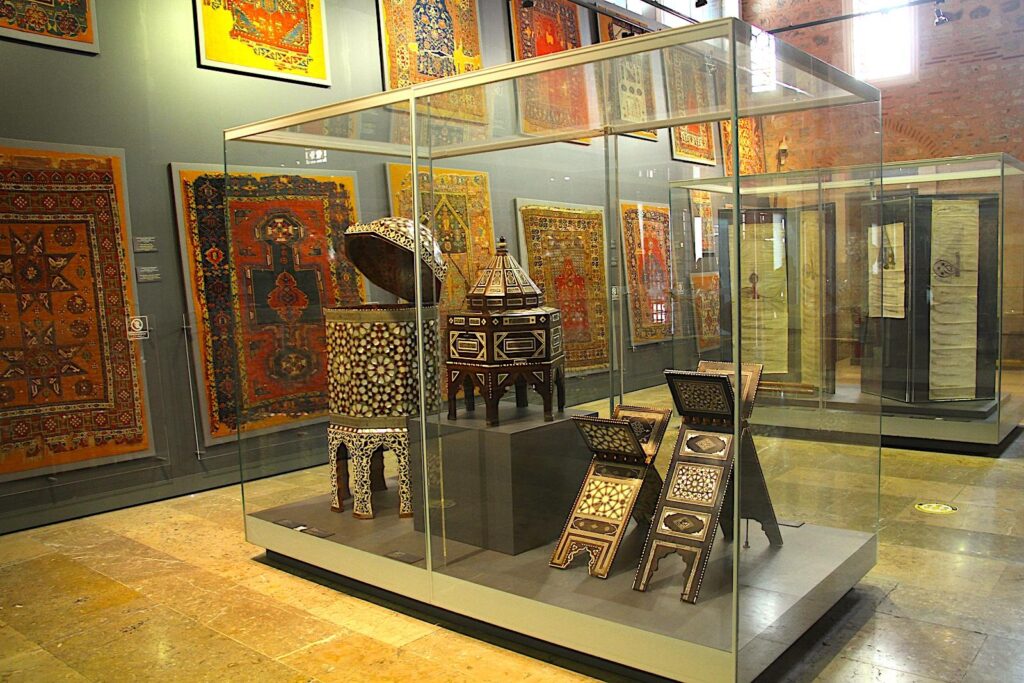

On the ground floor, visitors can often observe remnants and views related to the Hippodrome. This proximity provides a tangible connection to the city’s Byzantine past, as the Hippodrome was a central hub for social and sporting events.
Topkapı Palace
Location: Topkapı Sarayı Müzesi, Cankurtaran, 34122 Fatih/İstanbul. The official Turkish Museums website. Opening Hours: Wednesday – Monday: 09:00 – 17:30, Closed Tuesdays. Entrance Fee: The full-price adult entrance fee in February 2025 was the TL equivalent of €52.00 (includes entry to Topkapı Palace, the Harem and Hagia Irene).
Topkapı Palace, commissioned by Sultan Mehmed II after the 1453 conquest of Constantinople, served as the primary residence of Ottoman sultans for nearly four centuries. Its construction began in 1459 and continued through various sultans’ reigns, resulting in a complex of courtyards, pavilions, and buildings that reflect the empire’s growth and changing tastes. Initially, it was the centre of Ottoman power, where political decisions were made and imperial life unfolded. Following the establishment of the Turkish Republic in 1924, the palace was transformed into a museum, opening its doors to the public.
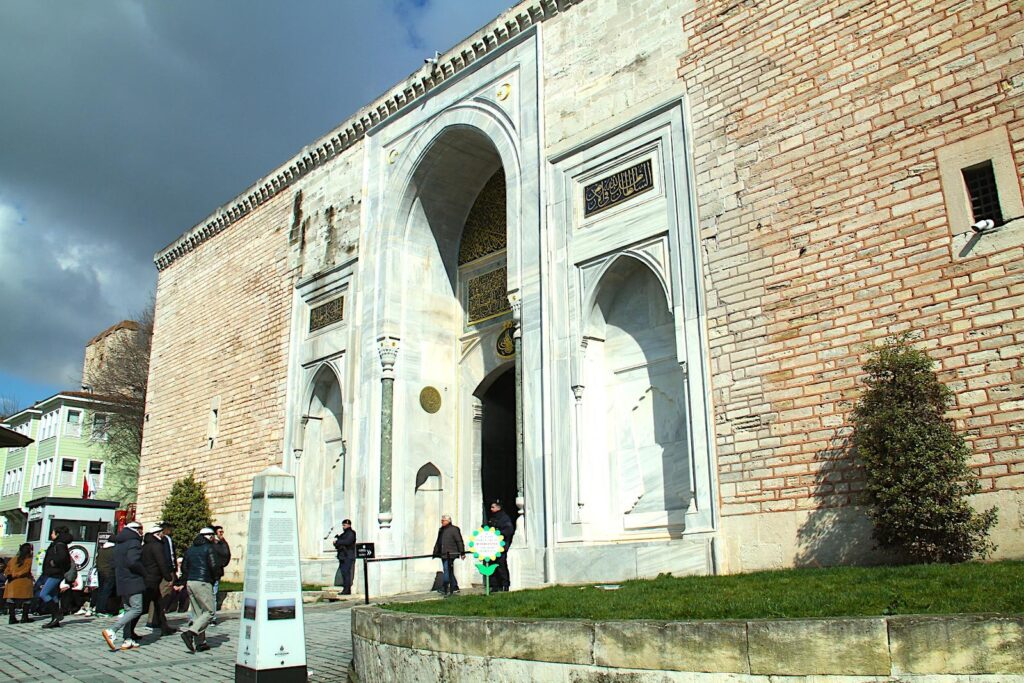
The palace’s architectural features are a testament to Ottoman craftsmanship and imperial grandeur. It is organised around four central courtyards, each serving a distinct purpose. The Harem, a separate section, housed the sultan’s family and concubines, offering a glimpse into the private lives of the Ottoman elite. The palace is adorned with intricate tilework, ornate ceilings, and stunning views of the Bosphorus, showcasing a blend of Islamic and Ottoman architectural styles. The treasury within the palace is renowned for its collection of precious jewels, including the Spoonmaker’s Diamond and the Topkapi Dagger.
Beyond its architecture, Topkapi Palace holds a vast collection of historical artefacts. These include imperial robes, weapons, porcelain, and religious relics, providing insight into the daily life and cultural richness of the Ottoman Empire. The Sacred Relics Chamber, in particular, houses items believed to have belonged to the Prophet Muhammad, adding to the palace’s religious and historical significance. The palace’s strategic location, overlooking the Golden Horn and the Sea of Marmara, further enhances its allure, making it a must-visit destination for those seeking to understand the legacy of the Ottoman Empire.
Istanbul Military Museum
Location: Harbiye Askeri Müze ve Kültür Sitesi Komutanlığı, Harbiye, 34367 Şişli/İstanbul, Türkiye. The official Military Museum & Cultural Command website. Opening Hours: Tuesday – Sunday: 09:00 – 16:00, Closed Mondays. Entrance Fee: The full-price adult entrance fee in February 2025 was the TL equivalent of €16.00.
The Istanbul Military Museum, also known as the Askerî Müze, provides a comprehensive overview of Turkish military history spanning over a thousand years. It’s housed in a former military academy in the Harbiye district, adding historical significance to the location. The museum is under the management of the Turkish Ministry of National Defense, specifically the Military History and Strategic Studies (ATASE) Division of the General Staff. This ensures the museum’s collection and exhibitions are maintained with historical accuracy and military expertise.
The museum’s exhibits are diverse, showcasing a vast collection of military artefacts from various periods. Visitors can explore displays of historic weapons, including swords, firearms, cannons, military uniforms, armour, and flags. The museum also features exhibits on significant military campaigns, such as the conquest of Constantinople, the Battle of Gallipoli, and the Turkish War of Independence. Outdoor displays include larger military equipment like cannons, aircraft, and helicopters.
A particularly notable highlight is the presence of the Mehter Takımı, the Ottoman army band performing traditional music in traditional uniforms most afternoons*. The Mehter Takımı, also known as Mehteran, is the Ottoman military band, one of the oldest military bands in the world. Originating from the Seljuks and continuing through the Ottoman Empire, it set the rhythm for the army’s march in battle, encouraged soldiers, announced the time during peacetime, and performed at state ceremonies and celebrations.
*The Mehteran Band gives concerts on Fridays between 11.00 and 11.30 and 15.00 and 15.30 and on Tuesdays, Wednesdays, Thursdays, Saturdays, and Sundays between 15.00 and 15.30. There is an additional fee to listen to the band.
Istanbul Naval Museum
Location: Deniz Müzesi, Sinanpaşa, Beşiktaş Cd. No:6 D:1, 34353 Beşiktaş/İstanbul, Türkiye. The official Naval Command Museum website. Opening Hours: Tuesday – Friday: 09:00 – 16:00, Saturday & Sunday: 09:00 – 17:00, Closed public holidays. Entrance Fee: The full-price adult entrance fee in December 2024 was the TL equivalent of €12.00. There is an additional charge for a “professional” camera.
The Istanbul Naval Museum (Deniz Müzesi) is a national naval museum in Beşiktaş. It was founded in 1897, making it one of Türkiye’s oldest military museums. The museum’s mission is to preserve and showcase the rich maritime history of Türkiye, particularly the Ottoman Navy and the modern Turkish Naval Forces. It’s under the direct management of the Turkish Naval Forces Command.

The museum houses a diverse collection of naval artefacts, including historical ships, maritime equipment, uniforms, paintings, and documents. Visitors can explore a variety of exhibits that trace the evolution of Turkish naval power from the Ottoman era to the present day. One of the main highlights is the collection of Ottoman imperial caiques (royal barges), which are ornately decorated and provide a glimpse into the opulence of the Ottoman court. There are detailed models of historical ships, various naval weaponry, and a comprehensive collection of ship figureheads. The museum also showcases the development of shipbuilding technology and the role of the Turkish Navy in different historical events. The outdoor exhibits, including some larger vessels, are also worth exploring.
Rahmi M. Koç Museum
Location: Piri Paşa, Rahmi M. Koç Caddesi No: 3, 34445 Beyoğlu/İstanbul, Türkiye. The official museum website. Opening Hours: Tuesday – Friday: 09:00 – 17:00, Saturday & Sunday: 10:00 – 18:00, Closed Mondays. Entrance Fee: The full-price adult entrance fee in February 2025 was the TL equivalent of €19.00.
The Rahmi M. Koç Museum in Istanbul is a fascinating industrial museum dedicated to the transport industry and the history of communications. It was founded by Rahmi M. Koç, a prominent Turkish businessman, and is managed by the Rahmi M. Koç Museum and Cultural Foundation. The museum aims to showcase the evolution of technology and its impact on society, making it a unique and engaging experience for visitors of all ages.
The museum’s exhibits are incredibly diverse, featuring various artefacts from various periods and fields. Visitors can explore displays of classic cars, vintage aeroplanes, historic trains, and maritime vessels, including a real submarine. Sections dedicated to the history of communication, with exhibits on telephones, radios, and other communication devices, are also on display. Additionally, the museum features displays of scientific instruments, machinery, and even toys, providing a comprehensive overview of technological and industrial development.
The main highlights of the Rahmi M. Koç Museum include the opportunity to see and even interact with many of the exhibits. Visitors can climb aboard historical vehicles, explore the interior of a submarine, and witness working demonstrations of various machines. The museum’s location on the shores of the Golden Horn adds to its charm, and there is also a restaurant on the terrace overlooking the Golden Horn. The museum is directly adjacent to the Hasköy ferry quay on the Haliç Line, which combines pleasantly with a ferry trip along the Golden Horn.
Panorama 1453 History Museum
Location: Panorama 1453 Tarih Müzesi, Merkez Efendi Mahallesi, Topkapı Kültür Park İçi Yolu, 34015 Zeytinburnu/İstanbul, Türkiye. The official Turkish Museums website. Opening Hours: Daily: 08:00 – 16:30. Entrance Fee: The full-price adult entrance fee in February 2025 was the TL equivalent of €18.00.
The Panorama 1453 History Museum in Istanbul offers a unique immersive experience into the pivotal moment of the city’s conquest in 1453. It’s a relatively modern museum, opened in 2009, and is managed by the Istanbul Metropolitan Municipality. Its creation was driven by the desire to vividly depict the conquest of Constantinople by the Ottoman forces under Sultan Mehmed II, making it a key historical event accessible to a broader audience.
The museum’s central exhibit is a breathtaking panoramic painting that encircles visitors, creating the illusion of being present during the siege. The meticulously detailed artwork depicts the intense battle scenes, armies clash, and the strategic movements that led to the city’s fall. The painting is complemented by sound effects, lighting, and 3D elements, enhancing the immersive experience. Surrounding the panorama are displays of artefacts, historical information panels, and multimedia presentations that provide context and details about the conquest, the armies involved, and the event’s significance. The main highlight, of course, is the panoramic painting itself, which is considered one of the largest of its kind in the world. Its sheer scale and attention to detail are imposing.
Museum of Great Palace Mosaics
Location: Büyük Saray Mozaikleri Müzesi, Sultanahmet Mahallesi Kabasakal Cad. Arasta Çarşısı Sok. No. 53, Sultan Ahmet, Torun Sk. No:21, 34122 Fatih/İstanbul, Türkiye. The official Turkish Museums website. Opening Hours: Tuesday – Sunday: 09:00 – 18:30 (18:00 in winter), Closed Mondays. Entrance Fee: The full-price adult entrance fee in February 2025 was €10.00.
The Museum of Great Palace Mosaics, located within the Arasta Bazaar in Istanbul, showcases stunning Byzantine mosaics that once adorned the floor of the Great Palace of Constantinople. These mosaics were discovered during excavations in the mid-20th century and have been meticulously preserved and displayed. The museum is affiliated with the Istanbul Archaeological Museums. It is under the management of the Turkish Ministry of Culture and Tourism, ensuring the preservation and study of these important historical artefacts.
The museum’s primary exhibit is the collection of well-preserved mosaic panels dating back to the 5th and 6th centuries A.D. These mosaics depict scenes from daily life, mythology, and nature, providing a fascinating glimpse into the artistic and cultural sophistication of the Byzantine era. The intricate details and vibrant colours of the mosaics are genuinely remarkable, showcasing the skill of the Byzantine artisans. The scenes include depictions of animals, hunting, pastoral life, and mythological figures, offering insights into the social and cultural context of the time.
Istanbul Railway Museum **Free**
Location: İstanbul Demiryolu Müzesi, Gar (Sirkeci, Hoca Paşa, 34110 İstanbul, Türkiye. The official TCDD museum website (requires JAVA script enabled). Opening Hours: Tuesday – Sunday: 09:30 – 17:00, Closed Mondays. Entrance Fee: Free entry.
The Istanbul Railway Museum (İstanbul Demiryolu Müzesi) is located within the historic Sirkeci Railway Station, a fitting location given the station’s role as the terminus of the Orient Express. The museum was established in 2005 by the Turkish State Railways (TCDD) to preserve and showcase the history of railways in Türkiye.
The small museum houses a collection of railway artefacts, including historical documents, photographs, tools, and equipment. Visitors can explore displays of old railway carriages, locomotives, and signalling devices, providing a glimpse into the evolution of railway technology. The exhibits also highlight railways’ social and economic impact on Türkiye, showcasing their role in connecting different regions and facilitating trade and transportation. The museum also displays items related to the famous Orient Express, which adds to its historical charm. Its location within the Sirkeci Station makes it easily accessible by public transportation. It’s also worth noting that the museum complements a visit to the station itself, which is a historical and architectural gem.
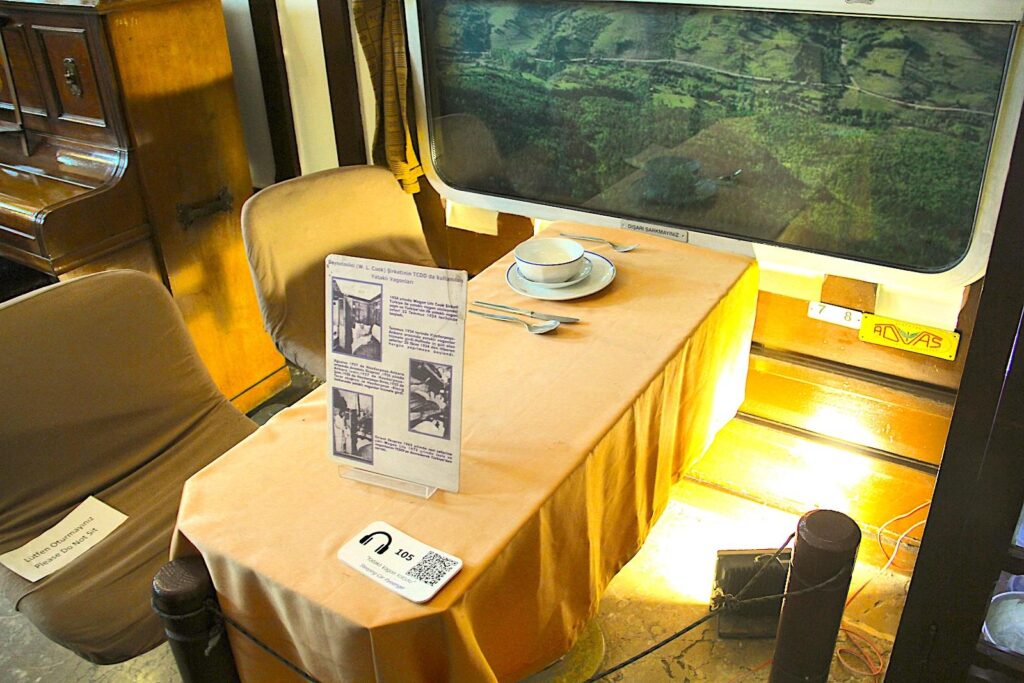
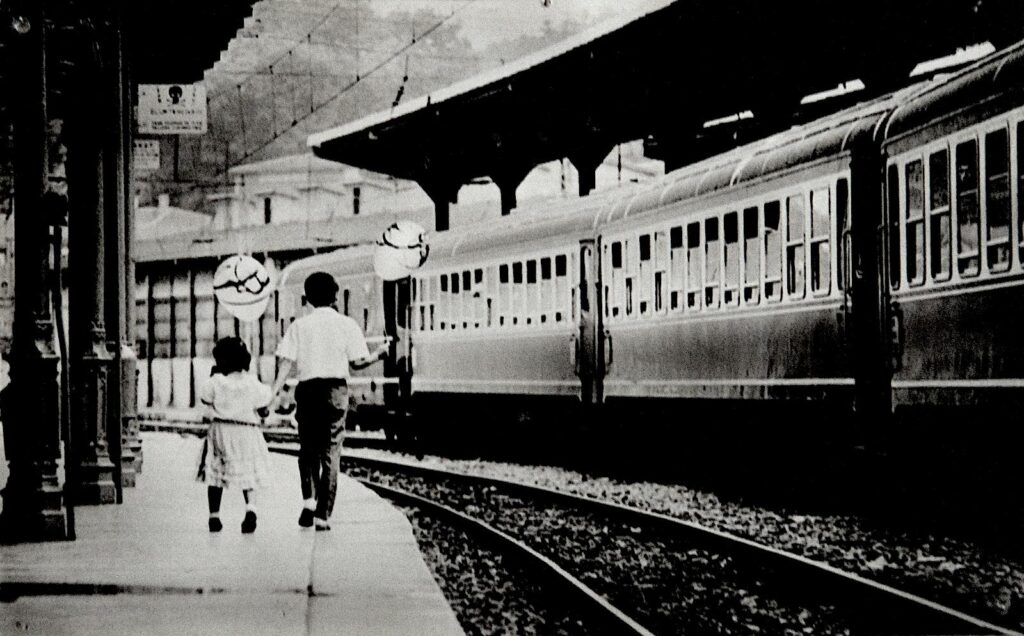
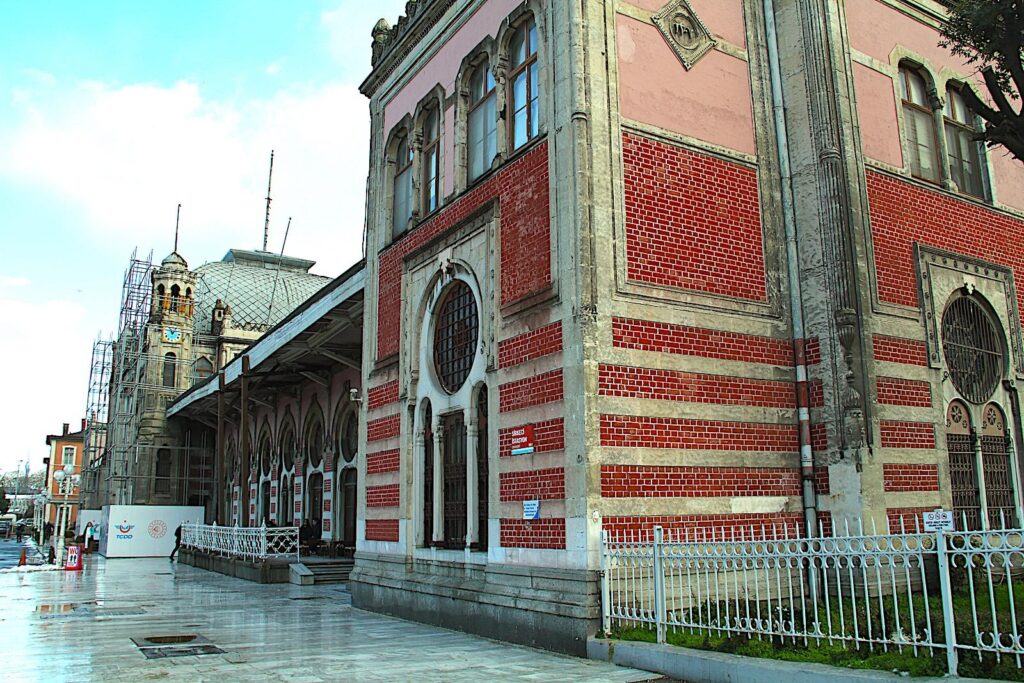
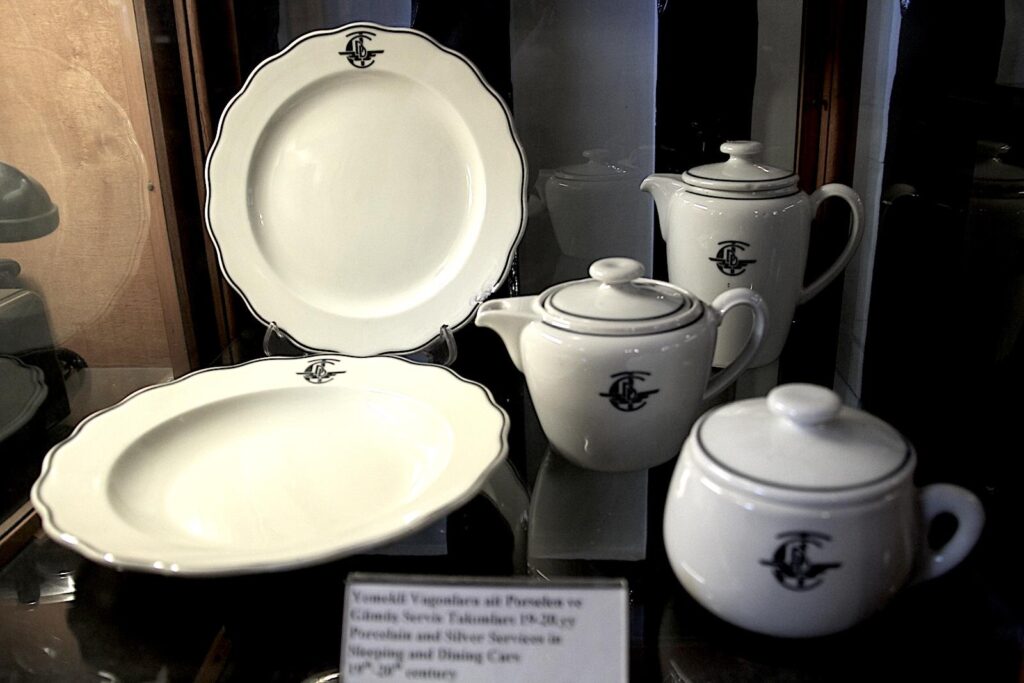
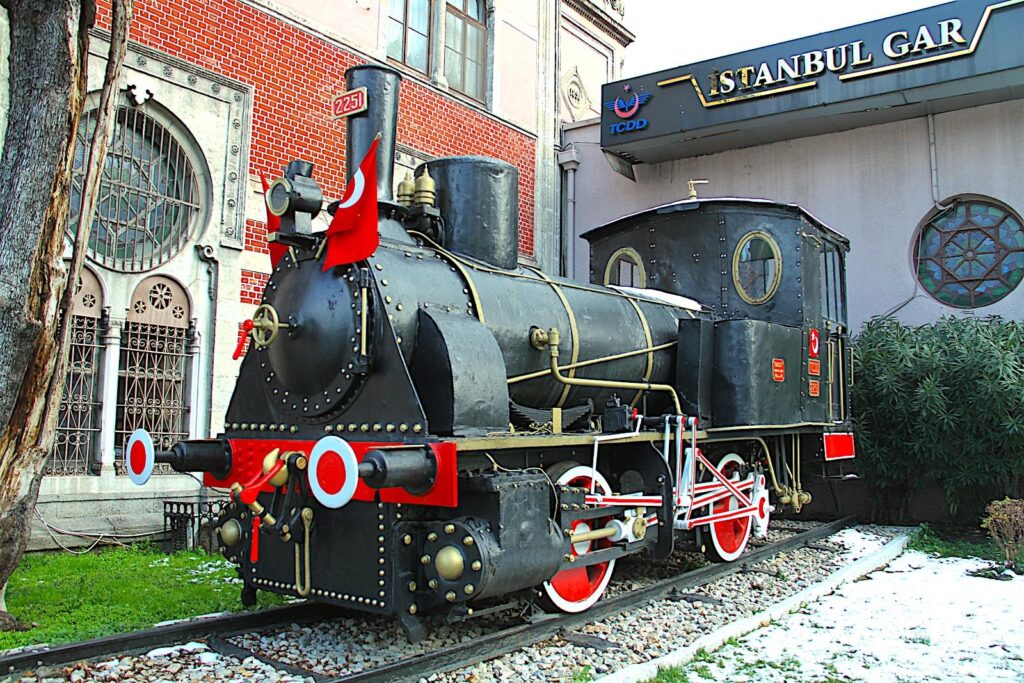
Istanbul Toy Museum
Location: İstanbul Oyuncak Müzesi, Göztepe, Dr. Zeki Zeren Sk No:15, 34730 Kadıköy/İstanbul, Türkiye. The official museum website. Opening Hours: Tuesday – Friday: 10:00 – 18:00, Saturday & Sunday: 10:00 – 18:30, Closed Mondays. Entrance Fee: The full-price adult entrance fee in February 2025 was the TL equivalent of €11.00.
The Istanbul Toy Museum is a delightful and whimsical museum founded by Turkish poet and writer Sunay Akın. It opened its doors in 2005 and is privately owned and managed by Akın. His passion for toys and their historical significance drove him to collect and curate a vast array of playthings from around the world. The museum is housed in a historical mansion in the Göztepe district of Istanbul, creating a charming and nostalgic atmosphere.
The museum’s collection spans centuries, showcasing toys from various eras and cultures. Visitors can explore displays of antique dolls, tin toys, wooden toys, model trains, and many other playthings. The exhibits are arranged thematically, each room representing a different period or theme. The museum also features dioramas and interactive displays that bring the toys to life, making it an engaging experience for visitors of all ages. The toys are not just objects; they are presented as cultural artefacts that reflect their time’s social and historical context.
Other Notable Museums
Atatürk Museum **Free**
Location: İBB Atatürk Müzesi, Meşrutiyet, Halaskargazi Cd. No:140, 34363 Şişli/İstanbul, Türkiye. The official museum website. Opening Hours: Tuesday – Sunday: 09:00 – 17:00, Closed Mondays. Entrance Fee: Free entry.
The Istanbul Atatürk Museum is dedicated to Mustafa Kemal Atatürk, the founder of the Republic of Turkey. It’s located in the Şişli district, in a historical mansion where Atatürk resided with his mother. The museum is under the ownership and management of the Turkish Ministry of Culture and Tourism, ensuring the preservation and presentation of Atatürk’s personal belongings and the historical context of his life.
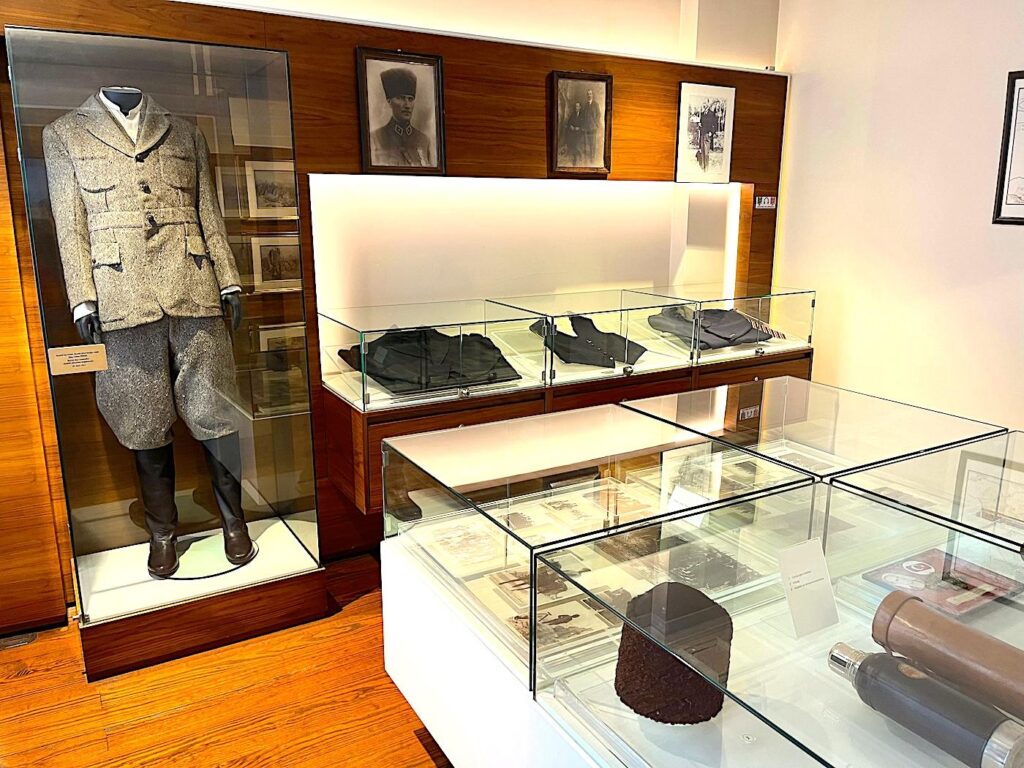
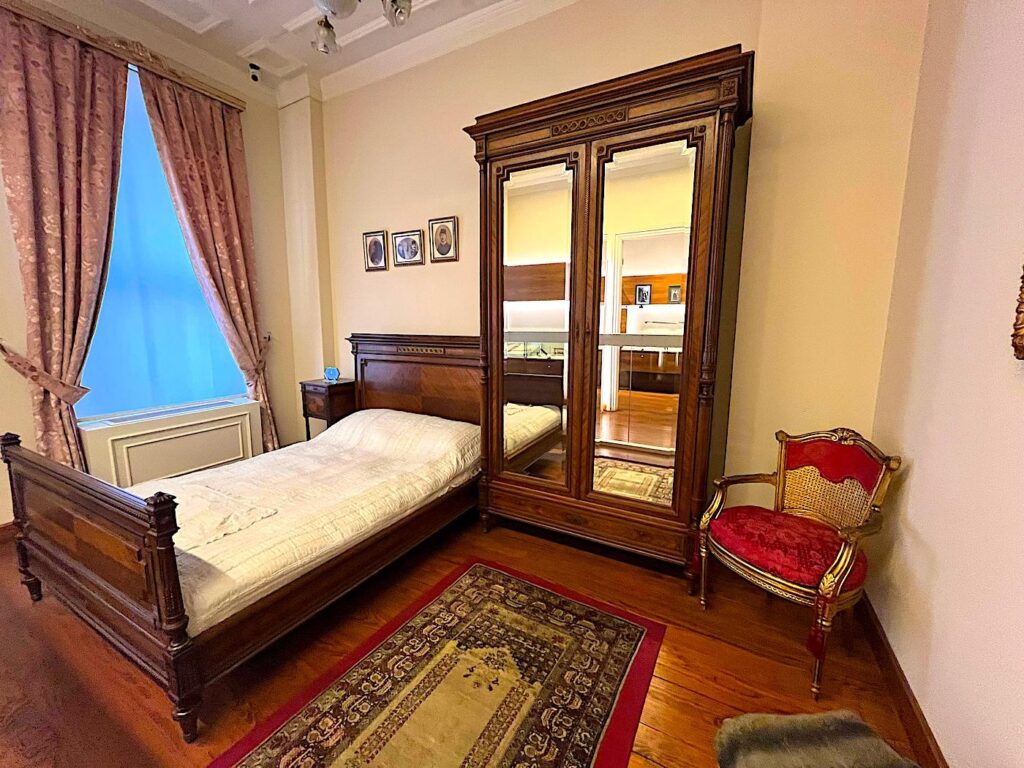
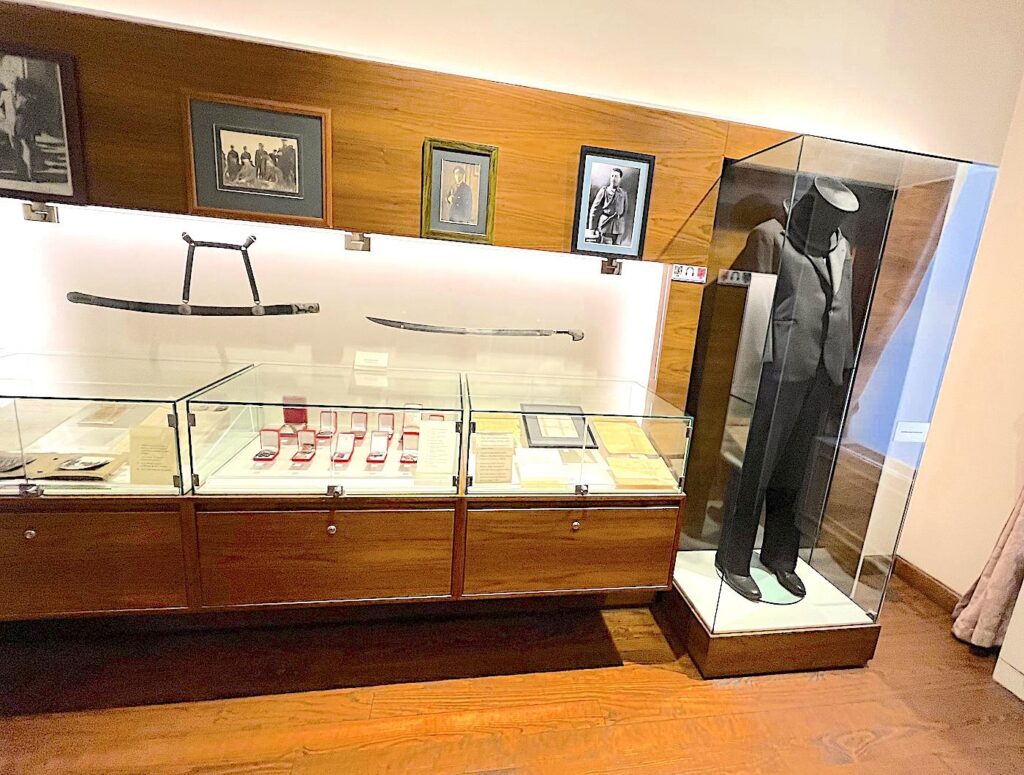
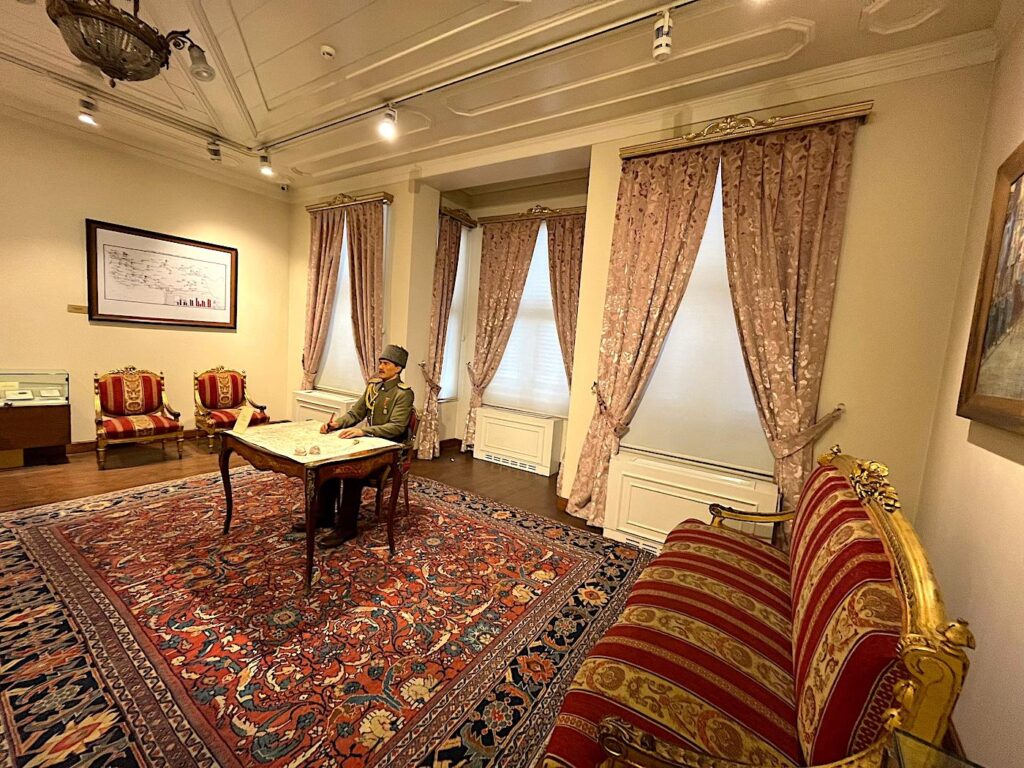
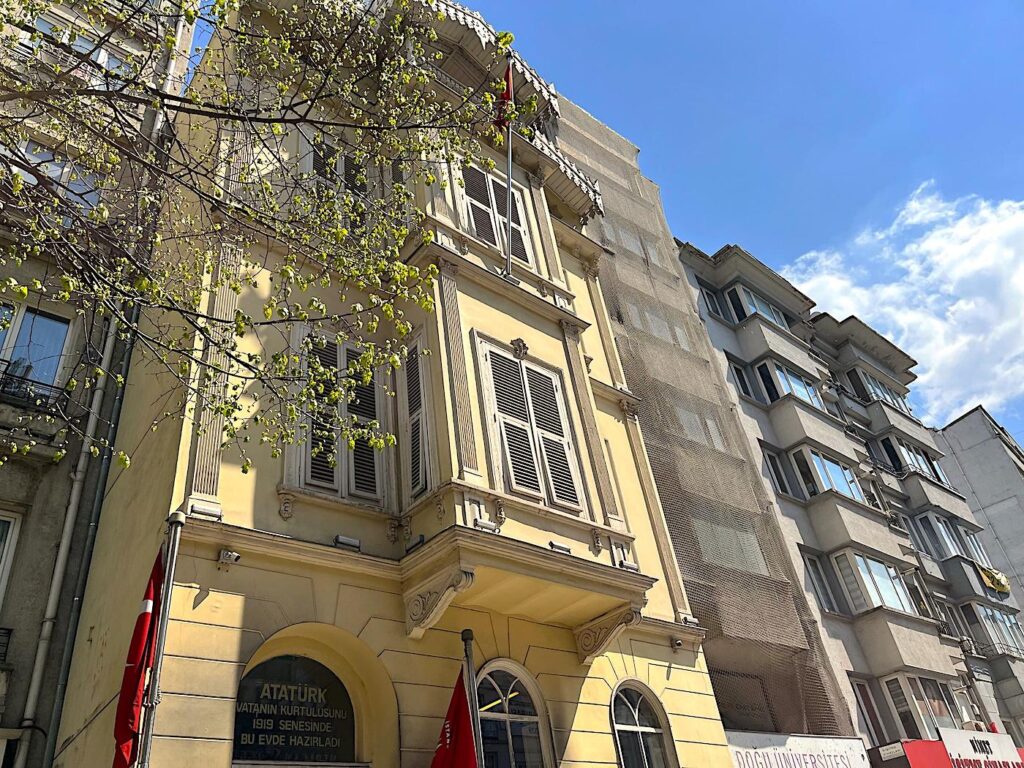
The museum exhibits a range of Atatürk’s items, including clothing, furniture, photographs, and documents. These artefacts provide insight into his personal life, values, and role in the Turkish War of Independence and the establishment of the Republic. The mansion’s rooms are preserved to reflect the period when Atatürk lived there, creating an authentic atmosphere. The exhibits showcase Atatürk’s personal life and the historical context of the era, including the political and social changes that shaped modern Turkey.
The main highlights of the Istanbul Atatürk Museum include the opportunity to see Atatürk’s personal belongings and experience the mansion’s historical atmosphere. The museum offers a valuable glimpse into the life of a pivotal figure in Turkish history. It’s also worth noting that the museum is a significant cultural site for Turkish citizens; therefore, it can be busy during national holidays and special occasions.
Hagia Sophia History and Experience Museum
Location: Ayasofya Tarih ve Deneyim Müzesi, Binbirdirek, At Meydanı Cd No:10, 34122 Fatih/İstanbul, Türkiye. The official Dem Museums website. Opening Hours: Daily: 09:00 – 19:00. Entrance Fee: The full-price adult entrance fee in February 2025 was €25.00.
The Hagia Sophia History and Experience Museum is a relatively new addition to Istanbul’s museum scene. It is designed to give visitors a deeper understanding of the Hagia Sophia’s rich and complex history. It is a privately owned and managed museum, distinct from the Hagia Sophia Grand Mosque. The museum aims to complement the experience of visiting the monument by offering detailed historical context and immersive displays.
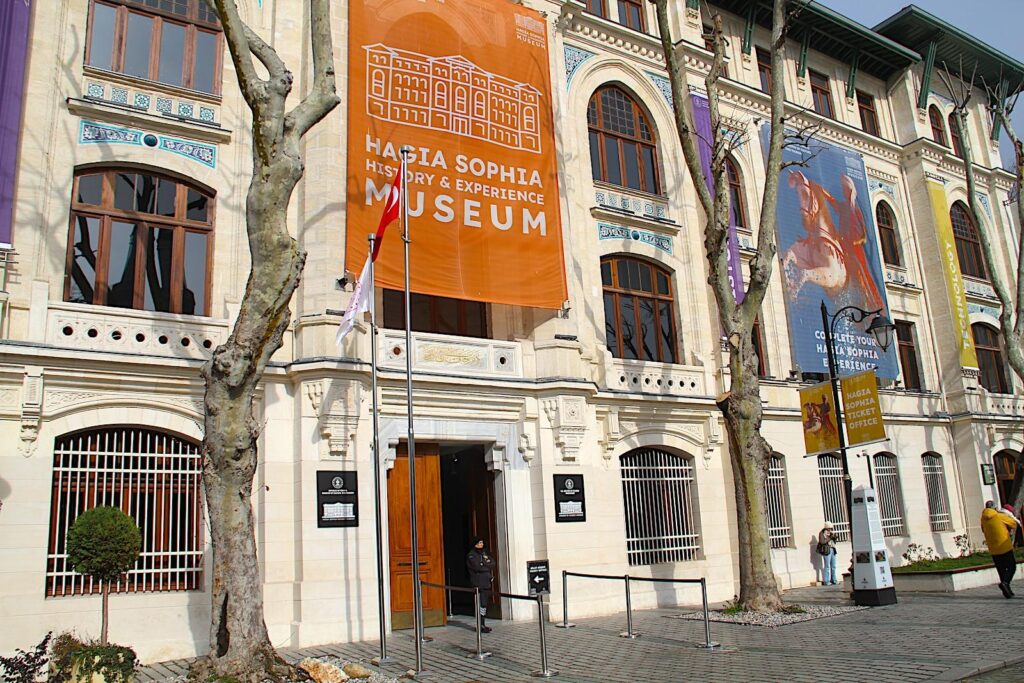
The museum’s exhibits utilise modern technology to bring the Hagia Sophia’s history to life. Visitors can explore interactive displays, multimedia presentations, and detailed reconstructions that showcase the building’s evolution from a Byzantine church to an Ottoman mosque and its subsequent transformation into a museum and then back into a mosque. The exhibits cover various aspects of the Hagia Sophia’s history, including its architectural significance, its religious importance, and its role in the cultural and political life of Constantinople/Istanbul. The museum also delves into the various restorations and modifications made to the building over the centuries. The museum can get crowded, with long queues, especially during peak tourist seasons.
Basilica Cistern
Location: Yerebatan Sarnıcı, Alemdar, Yerebatan Cd. 1/3, 34110 Fatih/İstanbul. The official site website link and the official Turkish Museums website. Opening Hours: Daily: 09:00 – 23:50. Entrance Fee: The full-price adult entrance fee in February 2025 was the TL equivalent of €34.00, and €52.00 for the “night shift” after 19:30.
The Basilica Cistern, in Turkish Yerebatan Sarnıcı, is an ancient underground water reservoir built in the 6th century during the reign of Byzantine Emperor Justinian I. It was constructed to provide water to the Great Palace and other buildings in the city, especially during times of siege. The cistern’s strategic location and impressive engineering made it vital to Constantinople’s water infrastructure. After the Ottoman conquest, the cistern continued to be used, although it fell into disrepair over time. Rediscovered and restored in the mid-20th century, it has become a popular tourist attraction, offering a glimpse into the city’s ancient past.
The Basilica Cistern’s remarkable feature is its scale and architectural grandeur. Supported by 336 marble columns, many of which were recycled from older structures, the cistern creates a mesmerising subterranean space. The columns add to the cistern’s historical and artistic significance with various styles and carvings. The two Medusa heads, used as bases for some of the columns, are particularly famous and shrouded in mystery. The cistern’s vaulted brick ceiling and the still, reflecting water create an atmospheric and somewhat eerie ambience. The subtle lighting and the sound of dripping water enhance the sense of being in a hidden, ancient world.
Inside the Basilica Cistern, visitors can explore the walkways installed above the water, allowing them to view the columns and the Medusa heads up close. Recent renovations have enhanced the visitor experience with improved lighting and sound systems. The cistern also hosts occasional art installations and special events, leveraging its unique environment. In recent years, the Basilica Cistern began hosting night performances with light shows and music, which add to the atmospheric experience. These light shows highlight the architecture, sculptures, and water and are accompanied by music that enhances the feeling of being in an ancient, magical space.
Maiden’s Tower Museum
Location: Kız Kulesi, Salacak, 34668 Üsküdar/İstanbul, Türkiye. The official Turkish Museums website. Opening Hours: Daily: 09:00 – 17:00, weather and sea conditions permitting. Entrance Fee: The full-price adult entrance fee in February 2025 was €32.00 (including transport).
The Maiden’s Tower, or Kız Kulesi, is an iconic Istanbul landmark on a small Bosphorus Strait island. Its history is rich and varied, from ancient Greek times through the Byzantine and Ottoman Empires to the present day. After a period of restoration, it has reopened as a museum under the management of the Turkish Ministry of Culture and Tourism. This recent renovation has made the tower more accessible, blending its historical significance with modern museum experiences.
Visitors can explore exhibits that detail the tower’s long and multifaceted past inside the Maiden’s Tower Museum. The displays cover its various roles throughout history, from a customs station and defence tower to a lighthouse and a quarantine station. The museum also delves into the numerous legends and myths associated with the tower, adding a layer of captivating storytelling to the historical facts. These stories, including the famous legend of the sultan’s daughter and the tale of Hero and Leander, are brought to life through informative displays and audio guides.
The main highlights of a visit to the Maiden’s Tower Museum include the stunning panoramic views of Istanbul from the tower’s upper levels. The 360-degree vistas of the city, the Bosphorus, and the surrounding areas are truly breathtaking. The tower’s interior spaces can be relatively small, so they may become crowded. Karaköy (European side) and Üsküdar (Asian side) provided ticketing and transportation to the museum. Still, these pick-up points are subject to change and should be checked before travel (not listed on the official website).
Museum of Innocence
Location: Masumiyet Müzesi, Çukurcuma Caddesi, Firuzağa, Dalgıç Çk. No:2, 34425 Beyoğlu/İstanbul, Türkiye. The official Masumiyet Museum website. Opening Hours: Tuesday – Sunday: 10:00 – 18:00, Closed Mondays. Entrance Fee: The full-price adult entrance fee in February 2025 was the TL equivalent of €13.00, or free in exchange for a ticket inside a printed version of the “Age of Innocence” book.
The Istanbul Museum of Innocence is a unique literary and art museum created by Nobel laureate Orhan Pamuk, based on his novel of the same name. It’s located in the Çukurcuma neighbourhood of Istanbul. Pamuk personally conceived and curated the museum, which is privately owned and managed. The museum is not just a collection of objects; it’s an extension of the novel, designed to visually and tangibly represent the story’s themes and characters. The museum exhibits a collection of objects mentioned in the novel, or Pamuk collected while writing it, creating a physical manifestation of the fictional world. These objects, ranging from cigarette butts and love letters to clothing and household items, are arranged in display cases that correspond to chapters in the book.
The museum aims to blur the lines between fiction and reality, inviting visitors to immerse themselves in the story and explore the themes of love, memory, and obsession. Each display case tells a story, offering a glimpse into the lives of the novel’s characters and the atmosphere of Istanbul in the 1970s and 80s. The main highlights of the Museum of Innocence include the meticulously curated collection of objects and the unique way they are presented. The museum offers a truly immersive experience, inviting visitors to step into the novel’s world. Reading the novel before visiting the museum can significantly enhance the experience, as the exhibits are closely tied to the book’s narrative.
Adam Mickiewicz Museum **Free**
Location: Adam Mickiewicz Museum, Bostan, Tatlı Badem Sk. No:23, 34435 Beyoğlu/İstanbul, Türkiye. The official museum website (Polish only). Opening Hours: Tuesday – Sunday: 09:00 – 17:00, closed Monday. Entrance Fee: Free entry.
The Adam Mickiewicz Museum in Istanbul is a small but significant cultural institution dedicated to the Polish Romantic poet Adam Mickiewicz. He spent his final days in the city and died at the house in 1855. The museum is located in the Tarlabaşı district, within the house where he resided. The Polish Ministry of Culture and National Heritage owns and manages the museum, highlighting the strong cultural ties between Poland and Türkiye.
“The East holds mysteries that Europe has forgotten.
In Constantinople, I seek not a city, but a prophecy.”
Fragment from Adam Mickiewicz lectures at the Collège de France (1840s)
Adam Mickiewicz (1798–1855) was a Polish Romantic poet, essayist, and political activist, widely regarded as one of Poland’s most significant literary figures and a national hero. His works, such as Pan Tadeusz and Dziady (Forefathers’ Eve), are central to Polish literature and identity, blending themes of patriotism, folklore, and mysticism. A passionate advocate for Polish independence during a time of foreign partitions, Mickiewicz lived much of his life in exile, particularly in France.
Adam Mickiewicz Poem – Ode to Youth (1820)
Here, heartless, spiritless, throng skeletons in sorry plight!
Youth, give me wings, that I may rise
Above this dead world, cursed and bare,
Into the realm of dreams and light,
For ardour brings forth marvels there,
Strews each new dream with blossoms rare,
And dresses each in golden hope’s fair guise.
Let him whom age makes dark of mind,
His stupid brow, care furrowed, bending low,
Only such near horizons know
As he with hopeless, dullard eyes can find.
Above these plains, youth, thou must fly –
As far above as doth the sun –
And with its vast, all-seeing eye
View all humanity as one!
Look downward!
Where eternal mists make dark
Chaotic wastelands flooded o’er with sloth,
Behold, that is the earth, repulsive, stark!
Look, there upon its stagnant seas
Some shell-clad mollusc takes its ease.
It for itself is ship and sailor both;
Pursuing smaller molluscs for the sport alone,
It rises now, now sinks from sight;
The wave cleaves not to it, it cleaves the ocean’s might,
Then, bubblelike, it breaks against a stone:
None knew its life, none cares that it no more exists.
Such are all egoists!
O youth, to me life’s ruddy, sparkling wine
Is sweet but when I share its ecstasy:
For joy gives drink to souls inspired and free
When golden threads bind them with love divine.
Young friends, together heed my call!
The aims of all are in the joy of all.
Strong in our unity, mad yet discreet,
On! on! young friends, nor fear to fall!
He too knows joy and gladness, he who fell,
If his prone body at their feet
Aided his friends to mount Fame’s citadel.
Together, friends, fear not its towering wall!
Though steep and slippery the path,
Though spineless hatred bar the gate,
Let strength meet strength and wrath fight wrath,
And let us learn while young to spurn the weakling’s hate.
Who, yet an infant, crushed the serpent’s brow,
In youth will choke the centaur’s breath,
Snatch victims forth from hell below,
And win heaven’s laurels after death!
Brave youth, reach outward far beyond thy sight,
Crush what mere human reason cannot harm!
For like an eagle’s is thy lofty flight,
The strength of thunderbolts is in thine arm.
Arise! United stand! With chains of harmony
Let us encircle the vast world,
Our thoughts into one mighty focus hurled,
Our spirits unified, yet free.
Thou earth-bound human clod, away!
We point thee a more lofty goal,
Till, freed from mouldy bark, thy soul
Recall its long-lost, verdant day.
And as in realms of chaos and of night,
Beset by elemental war,
One ‘Let there be ’ of God’s transcendent night
Gave to the universe its form –
Once oceans surged, once roared the storm,
Now stars shall shine forever more;
So in our human realms night rules the skies,
Still war the human passions of desire –
Lo, love will breathe on them with fire!
From chaos will the spirit world arise!
Youth will conceive it in her fertile womb
And friendship nurture it amid the gloom.
Numb, icy hearts are rent by love’s decree,
And lifeless, blind beliefs that dim the light.
Hail, hail, thou dawn of man’s new liberty!
Salvation’s sunrise will disperse the night!
[Translated by George Rapall Noyes and Marjorie Beatrice Peacock, 1944.]
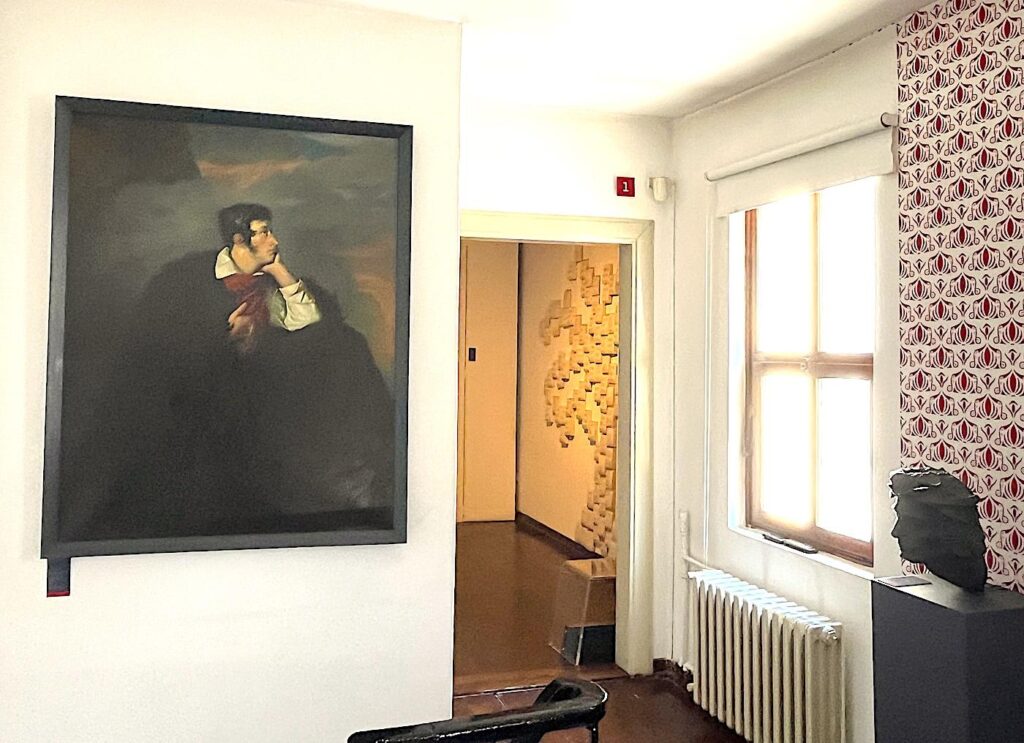

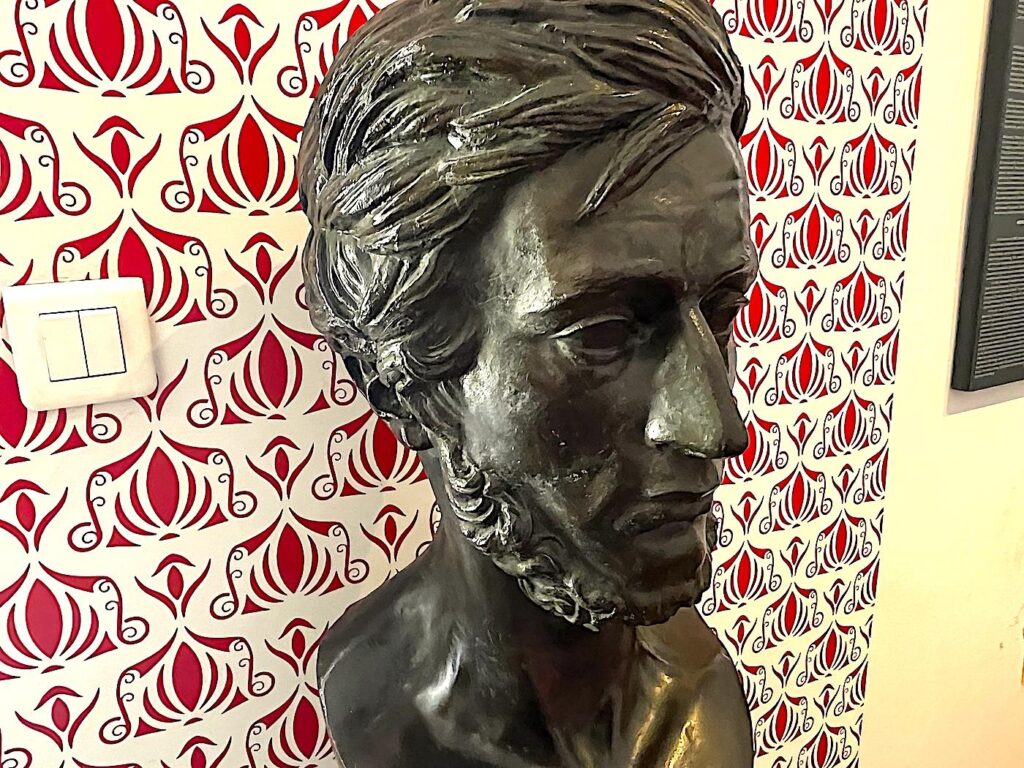
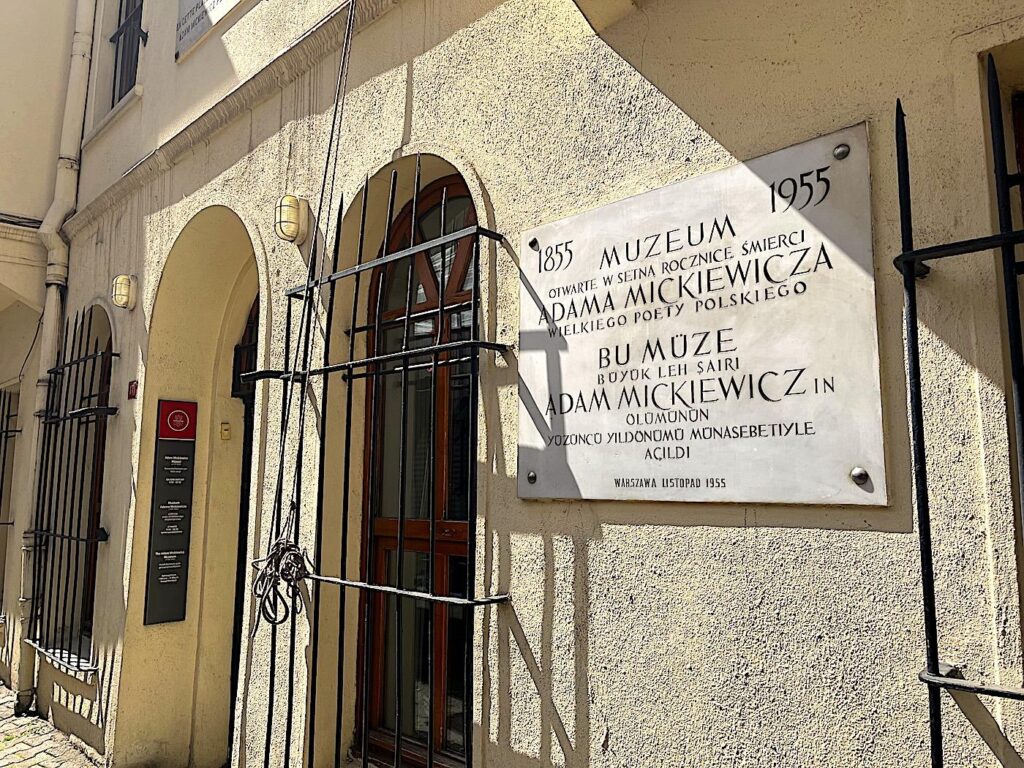

The museum’s exhibits focus on Mickiewicz’s life, particularly his time in Istanbul, and his literary contributions. The museum provides insight into his final years and connection to the city, with items signed in Polish, English, and Turkish. The displays also showcase the historical context of the period, including the political and social circumstances that brought Mickiewicz to Istanbul. The museum features a symbolic grave in its basement because it was the poet’s temporary burial place following his death in 1855. Mickiewicz died in Istanbul while organising Polish forces to fight against Russia during the Crimean War. Due to the urgency and circumstances of his death, most probably due to cholera, his body was initially interred in the cellar of the house where he had been residing. He was then buried in Montmorency, France, and his remains were transferred in 1890 to Wawel Cathedral in Kraków, Poland, where many of the nation’s most revered figures rest.
